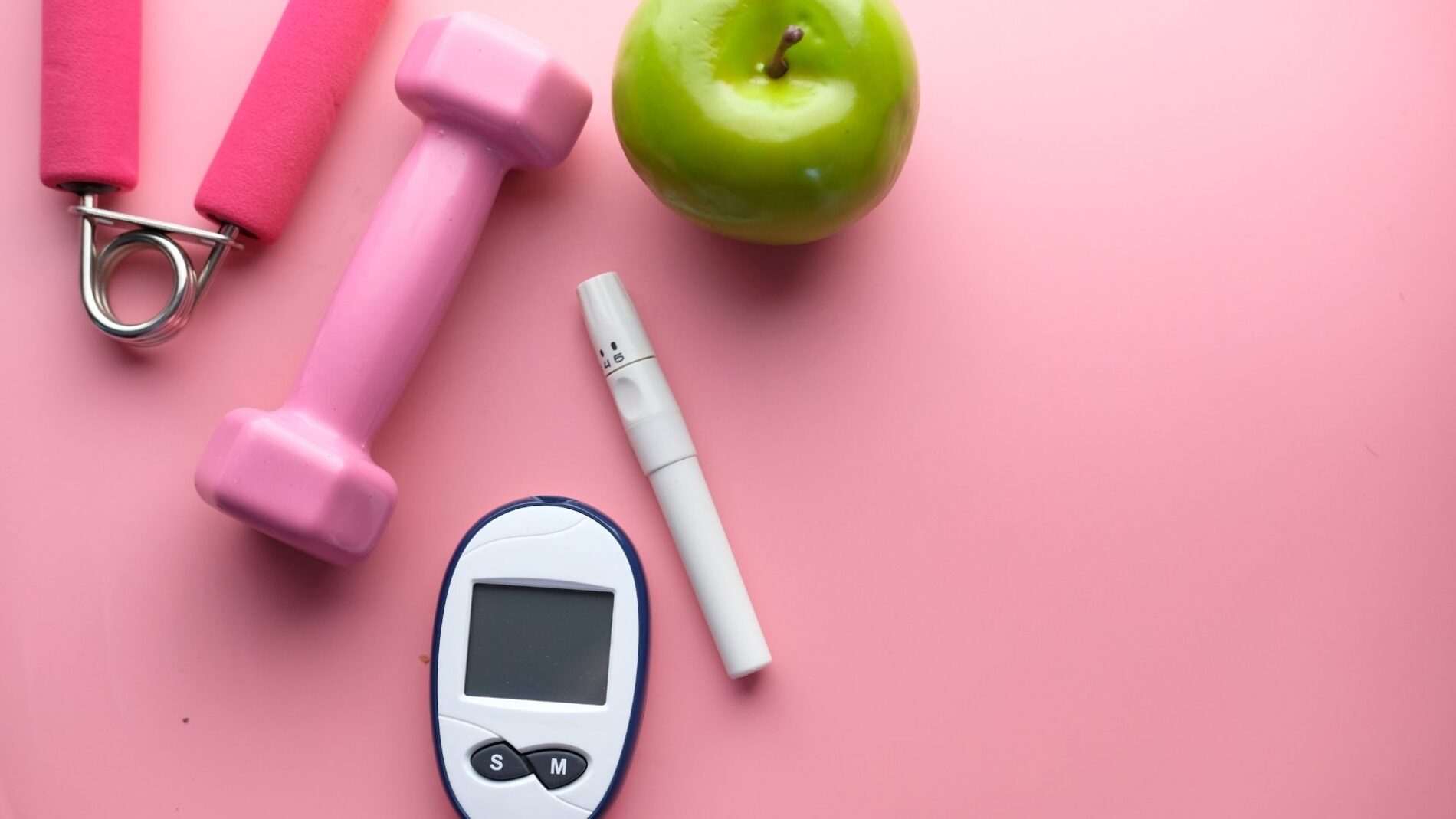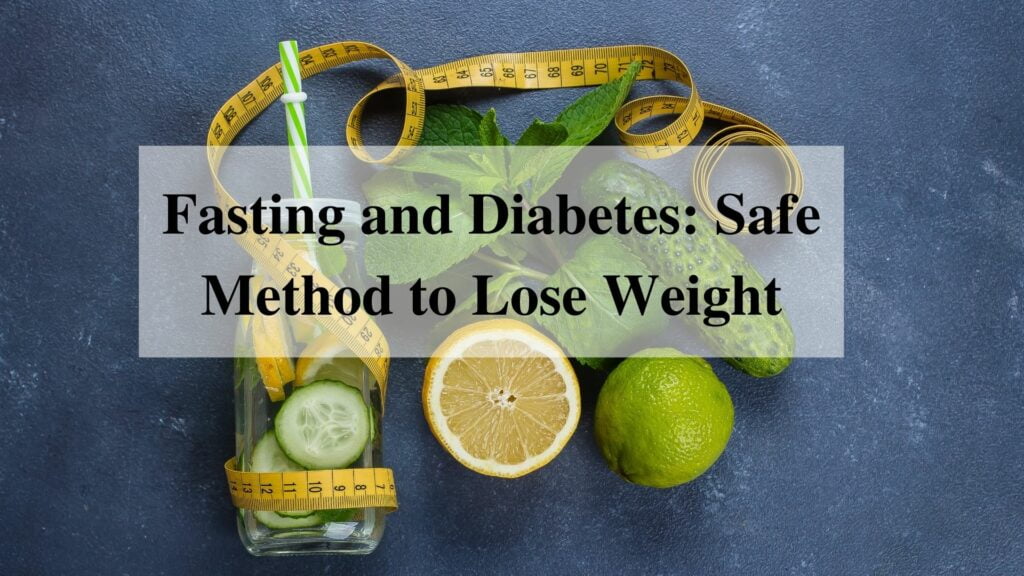Diabetes is a disease that has been drastically on the rise in recent years. It’s estimated that by 2030, every 4th person will have diabetes. The fasting and diabetes connection can be traced back to fasting’s effect on insulin sensitivity. This blog post talks about fasting and diabetes in more detail. What they are, how fasting helps with both of these conditions. Let’s explore how fasting may be one of the safest methods for weight loss available today!
Contents
Fasting In Diabetes
It can be a great way to lose weight and improve your fasting glucose levels. Fasting is not for everyone. So it’s important to speak with your doctor before choosing this method of weight loss.
Fasting in diabetes are some of the safest methods to lose weight. Fasting lasts for 12-72 hours. With no food or water consumption except for that contained in herbal tea (black, green, Pu-erh). This fasting has many benefits including increased insulin sensitivity and reduced blood sugar levels. Fasting can also be used to improve mental clarity.
There’s a lot of conversation surrounding fasting – that is, not eating for a while or drastically limiting your food intake – for better health. Is it safe and will it aid in weight reduction, blood sugar control, or even reduced medication requirements if you have diabetes?
It is possible. Some research claim that fasting may be beneficial for those with diabetes. However, it isn’t a common therapy. The American Diabetes Association does not advocate fasting as a method of managing diabetes. The association advocates integrating lifestyle modifications. These include medical nutrition therapy and increased physical activity, into the foundation of weight reduction and excellent glycemic control in those with type-two diabetes.
However, fasting is not for everyone and you should consult your doctor before beginning such a diet plan. Fasting can be unsafe if done incorrectly or in an unhealthy way, but fasting isn’t the same as starving yourself! It’s important to know what fasting means.
Pathophysiology of Fasting and Diabetes

For individuals who are not diabetic, eating increases insulin production, promoting the accumulation of glucose in the liver and muscle as glycogen. In contrast, when blood sugar levels go down during fasting, insulin production decreases.
Glucagon and epinephrine levels increase as well, stimulating the breakdown of glycogen while gluconeogenesis increases. When fasting goes on for more than several hours. Glycogen reserves are depleted. Low supplies of circulating insulin allow greater fatty acid release from adipocytes due to the lack of glucose.
Ketones are produced when polyunsaturated fatty acids are broken down. These ketones are in use as energy by skeletal and cardiac muscle, liver, kidney, and adipose tissue; thus sparing glucose for further brain and erythrocyte usage.
In people without diabetes, the processes described above are maintained by a delicate equilibrium between circulating levels of insulin and counterregulatory hormones. This prevents glucose levels from becoming too high or low.
Type 2 Diabetes and Insulin
Insulin secretion, on the other hand, is typically normal in type 2 diabetes. Insulin production is usually within the normal range in type 2 diabetes despite the disease’s presence and may even improve by pharmacological treatments designed to boost or supplement insulin release.
In individuals with diabetes, however, insulin output is disturbed by the disease process and frequently fails to compensate for the fasting state. This failure of insulin production is “insulin deficiency” or relative insulin deficiency, whereas high levels of counterregulatory hormones are referred to as an “elevated fasting blood glucose level”.
At any given time during fasting, some individuals with diabetes may show absolute insulin secretion rates that are either normal or even elevated.
However, fasting hyperglycemia (high blood glucose levels) may be an indication of insulin deficiency if it occurs without any obvious explanation like pancreatic disease or medications that raise glucagon levels.
Glucagon production may be insufficient in people with type 1 diabetes in response to hypoglycemia. In some individuals with type 1 diabetes, epinephrine production is also hampered by autonomic neuropathy and recurring hypoglycemia-related problems.
A fast of more than 48 hours in diabetic individuals who don’t have adequate insulin can result in excessive glycogen breakdown and increased gluconeogenesis and ketogenesis, resulting in hyperglycemia and ketoacidosis.
Patients with type 2 diabetes may suffer similar perturbations in response to a prolonged fast; however, ketoacidosis is uncommon, and the severity of hyperglycemia depends on the extent of insulin resistance and/or deficiency.
In fasting, the body uses ketones as a source of energy. In uncontrolled diabetes, fasting can be deadly because without insulin to let glucose into cells for use as fuel, blood sugar will rise and cause organ damage or failure if left untreated.
Intermittent Fasting and Diabetes

Intermittent fasting protocol is very effective for diabetics. It is one of the safest methods to lose weight and also improve your blood sugar levels.
- It was first tested on obese patients, but it takes time before they can adapt to fasting like this as their body burns fat instead of glucose (gluconeogenesis) when fasting.
- When fasting, the body becomes more sensitive to insulin and therefore absorbs glucose better to reduce blood sugar levels.
- Fasting for diabetics is much easier than it seems because you can always eat your regular meals (full or not) but postpone them on without having any problem with fasting.
- Intermittent fasting is very effective for diabetics and it has been tested on thousands of patients who have all seen positive results with their fasting, weight loss, and blood sugar levels.
- Fasting combined with diabetes monitoring can make life easier for diabetic people because they won’t need to constantly monitor their glucose levels.
Intermittent Fasting Strategies
Fasts that don’t allow any food are dry. However, on intermittent plans, you adhere to a pattern of fasting and then eat normally. The following are some examples of intermittent fasting strategies:
Alternate-day fasting
You eat a normal diet one day and then consume 600 calories or less the next, repeating this routine throughout the week. The 5:2 diet, in which you eat a healthy diet five days a week and restrict your calorie consumption to 500 to 800 on the other two days, is similar.
Time-restricted eating
This is when you consume all of your calories for the day during a particular period. For instance, on an 8-hour plan, you may eat from 10 a.m. to 6 p.m., and then not again until the next day at 10 a.m.
Not eating for more than 24 hours when you have diabetes might be hazardous, especially if you do it regularly. For example, fasting for religious reasons is done by some people. However, prolonged fasting without food for more than 24 hours when you have diabetes can be harmful.
Benefits of Fasting and Diabetes

Many of the studies on fasting have been done on rodents in laboratories. Researchers are looking at how people react to it, including those with diabetes. Though early findings are encouraging, they aren’t conclusive yet.
The health benefits of fasting are at the limit. It can aid in weight reduction, inflammation, and cholesterol levels. Fasting may also improve your body’s glucose (blood sugar) management and reduce insulin resistance.
In one study, three men with type 2 diabetes had been taking it for 10-25 years. With medical supervision, the guys fasted every other day or three days per week. Within a month, all of the individuals were able to cease insulin therapy. And in under a year, they were able to reduce or eliminate other diabetes medicines.
In one fasting-based diabetes study, individuals with type two diabetes fasted three days a week for three months. During this time they lost an average of 18 pounds and their fasting glucose levels dropped from 177 mg/dL to 122mg/dL. Those who keep fasting may not need insulin in the future either, researchers say.
Fasting can help to reduce weight and control diabetes, but fasting isn’t for everybody. People should consult their health care provider before starting a fasting regimen and stop fasting immediately if they feel unwell or have concerns.
If you choose to fast, make sure that you work with your doctor first as the process can be very dangerous without medical supervision.
Added Benefits
Additionally, fasting has been known to cause nausea and vomiting, headaches, fasting increases your risk for infection while fasting.
Fasting is not the only way to take care of diabetes safely. Numerous research studies show that a well-balanced diet plan consisting of whole foods such as vegetables, fruit, beans, and lentils can help you maintain blood glucose levels in between meals.
Bigger studies need to confirm those findings and to see how long the results last. It’s also not clear which fasting plan is best or how often you’d have to do it.
If you’re overweight or obese, weight reduction can help decrease your A1c level (a measure of blood sugar control during the previous 2-3 months) and reduce your risk for heart disease, according to the American Diabetes Association. Weight reduction doesn’t need to be fast.
Fasting might also influence the dosage of insulin you require. In one research, individuals with type 1 diabetes who maintained a fasting regimen were able to reduce their insulin dosage.
Fasting may help a variety of body systems, including those that have diabetes. The liver has a large amount of glycogen as a result of storing extra glucose. It takes your body about 12 hours to shift that glycogen.
If you don’t eat, your body burns fat rather than glycogen for energy. This aids in weight reduction. It also allows your liver and pancreas (which produces insulin, the hormone that controls blood sugar) to relax.
Risks of Fasting and Diabetes

When you don’t eat, your body will probably want food (at least at first). You may also be sleepy and irritated. A headache is possible if you don’t consume enough calories. And if you skip meals for more than a day or two, your body won’t get enough of the nutrients it requires without supplements.
The most serious hazard of fasting for persons with diabetes is that their blood sugar concentrations may drop dangerously low. That’s especially true if you take insulin to manage your diabetes. When you don’t eat, your blood sugar levels are lower, and your medications may worsen this condition, even more, resulting in hypoxia
When you “break” your fast by eating, you’re more prone to hyperglycemia, or high blood sugar levels. This is hyperglycemia. This happens only if you consume an excessive amount of carbohydrates. If fasting causes you to eat too much carbohydrate-rich food, it may not be the best strategy for you.
Guidelines for Fasting and Diabetes
Consult your doctor first. If you have type 1 diabetes, other health issues linked to diabetes, or if you’ve had hypoglycemia, your doctor may advise against fasting. Ask your doctor if you need to check your blood sugar more often or change your diabetes medication while and after fasting.
Keep an eye out for symptoms of low blood sugar. If you experience shaking, sweaty palms, or a fuzzy mind, your blood sugar may be dangerously low. Immediately cease fasting and go about your usual hypoglycemia treatment regimen. When your blood sugar level is normal, eat a glucose gel or have a sweetened beverage followed by a meal.
After fasting is permitted, keep an eye out for symptoms of low blood sugar. If you experience shaking, sweaty palms, or a fuzzy mind your blood sugar may be dangerously low. Immediately cease fasting and go about your usual hypoglycemia treatment regimen (i.e., eat glucose gel or drink a sweetened beverage followed by a meal
After fasting, be cautious about what you eat. Consuming too many carbohydrates after fasting can cause your blood sugar levels to become dangerously high. Choose meals and snacks that are good for you and nutritious.
Take care. When you’re fasting, don’t do hard workouts. Hard exercise has the potential to lower blood sugar, which can induce hypoglycemia. Find out what activities are acceptable for you or take a break if needed.
Drink a lot of water and calorie-free beverages if you’re going without food. Dehydration is a major concern for people with diabetes since it makes blood sugar control more difficult. When you fast, drink a lot of water and calorie-free drinks to keep your body hydrated.
Conclusion
Fasting for a short period can help improve diabetes management. This article provides an overview of the benefits and potential drawbacks to fasting, but in brief; it’s possible that fasting may be able to provide some relief from diabetic symptoms over time with no side effects or adverse reactions. If want to try out this lifestyle change, make sure to consult your doctor first! It would also be advisable if you were already following a ketogenic diet before starting intermittent fasting since both are similar eating styles focused on reducing calorie consumption while still providing sufficient nutrients.
Do you want to get rid of diabetes? Join our online diabetes consultation program and reverse your Diabetes naturally through lifestyle changes such as a Personalized Diet plan, Exercise, dieticians, and health coaches.


